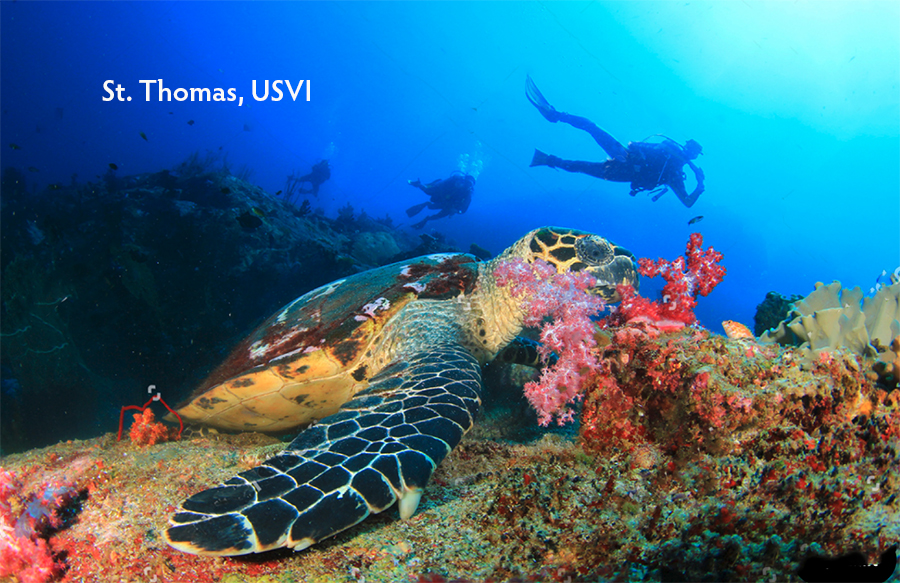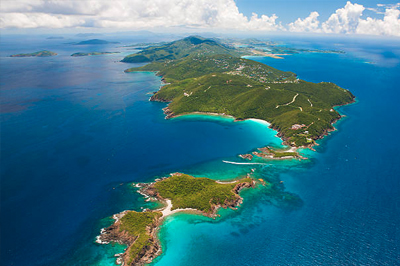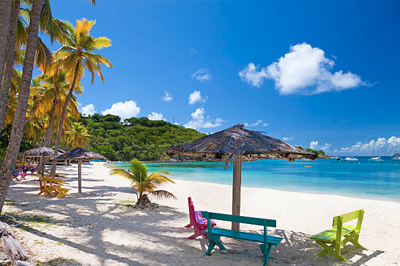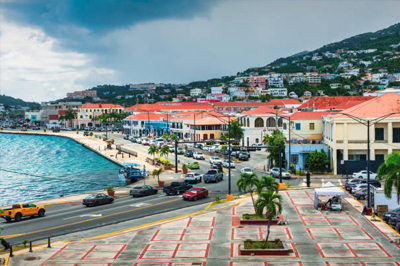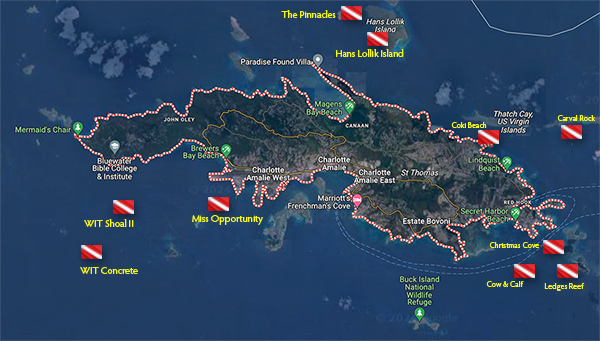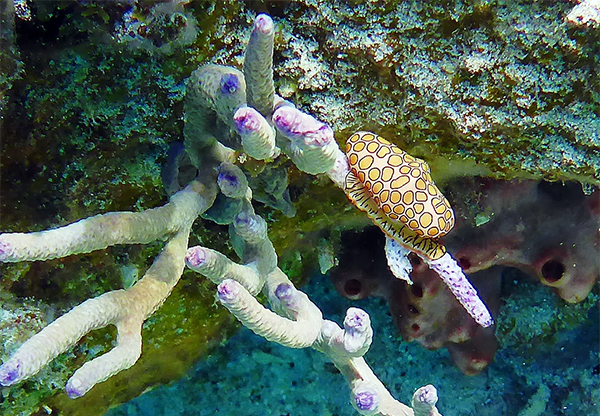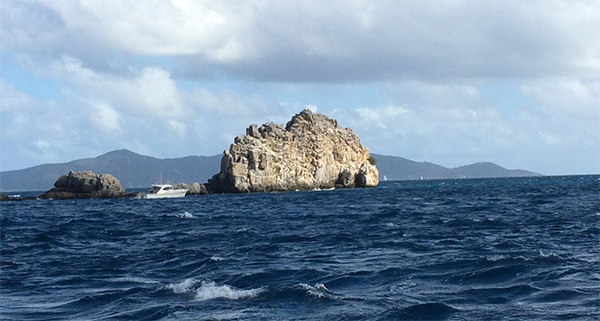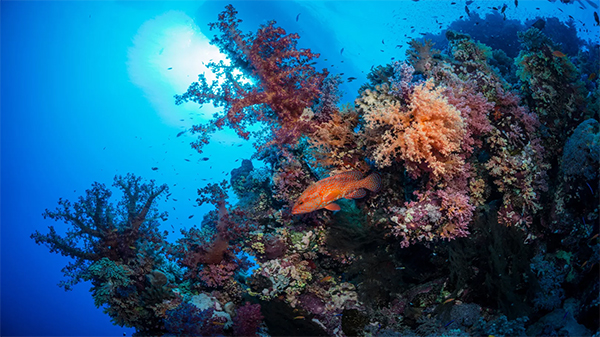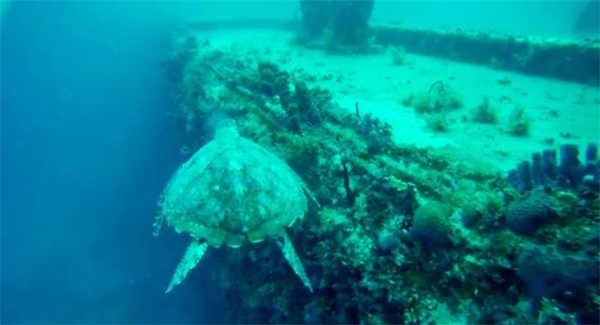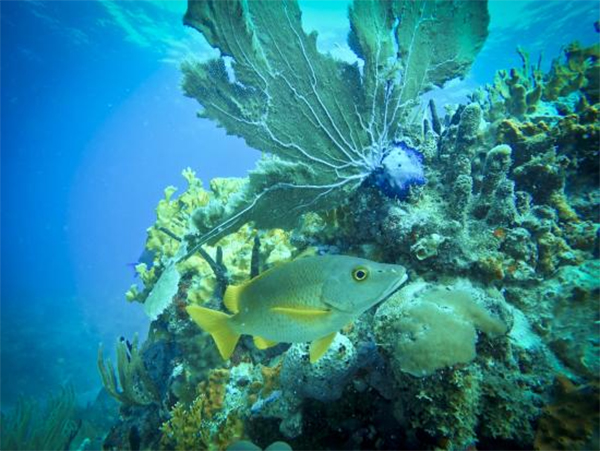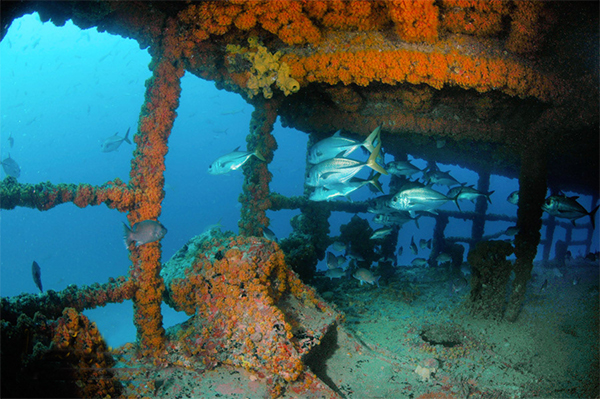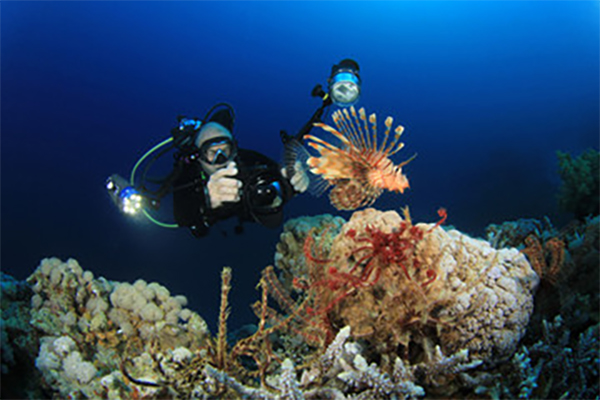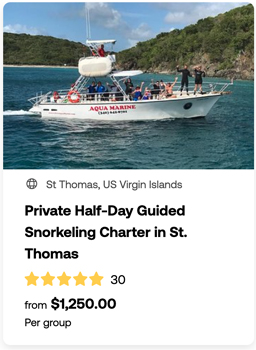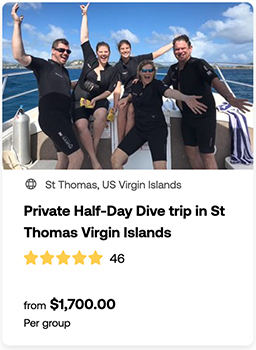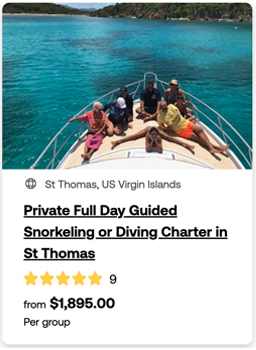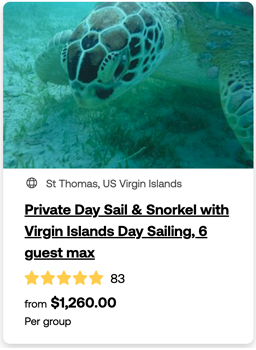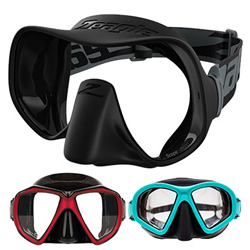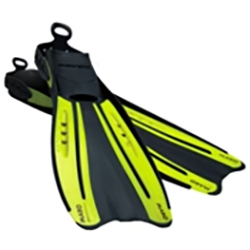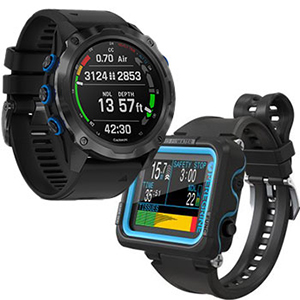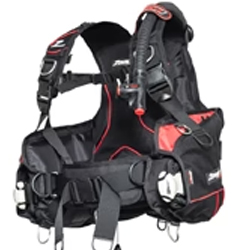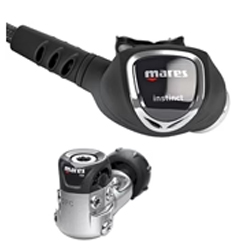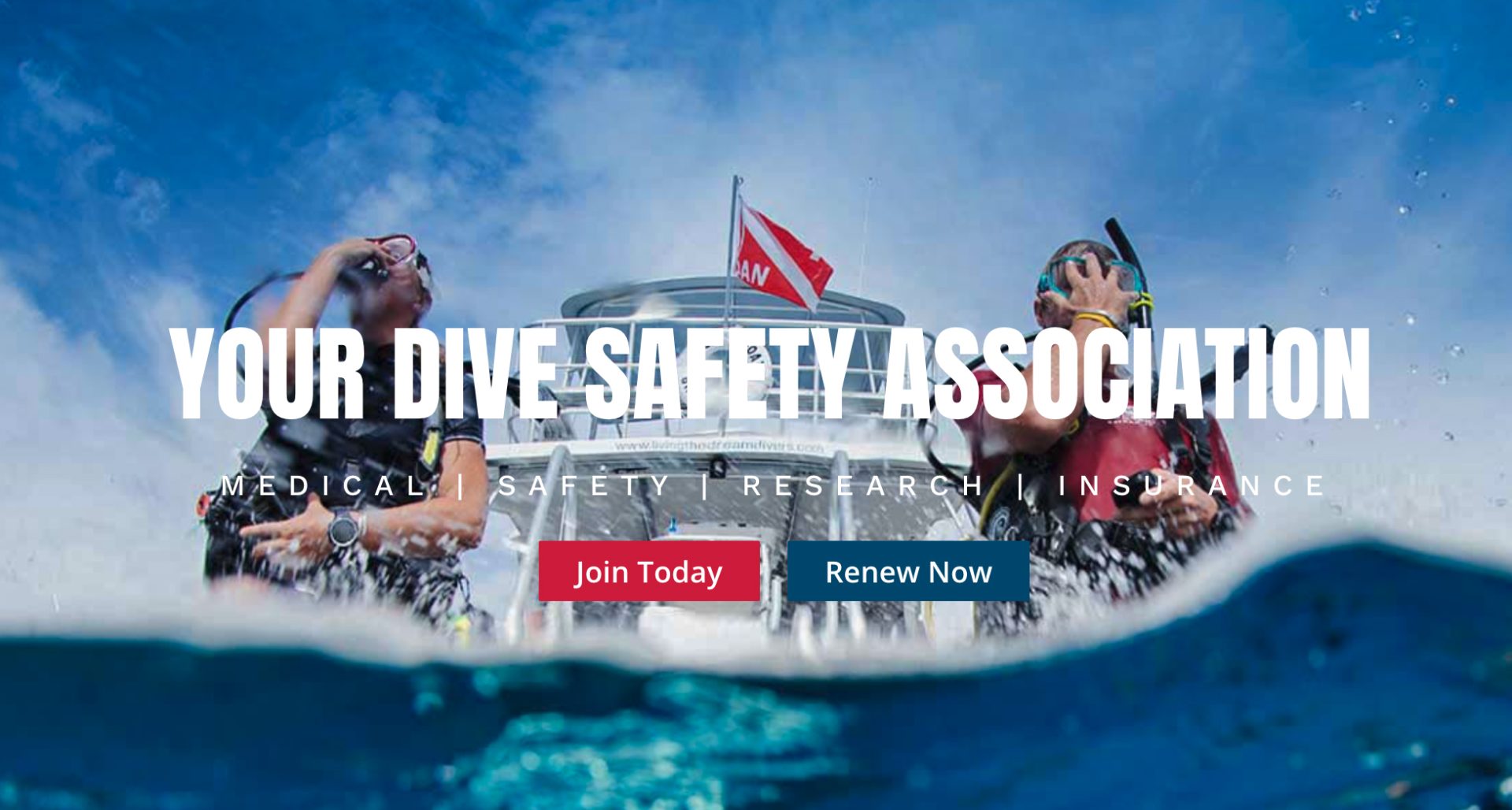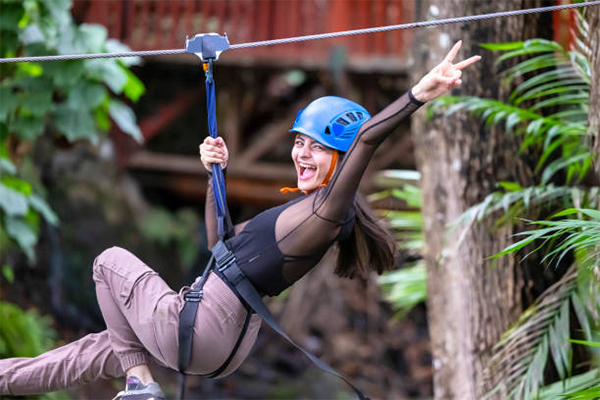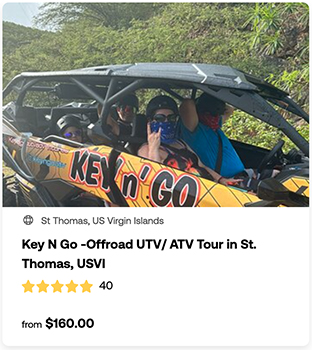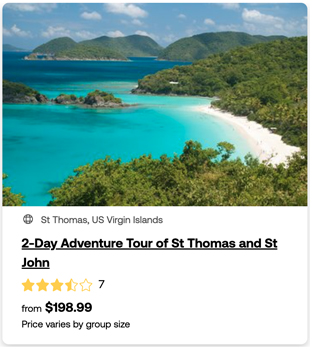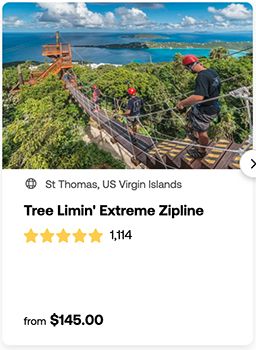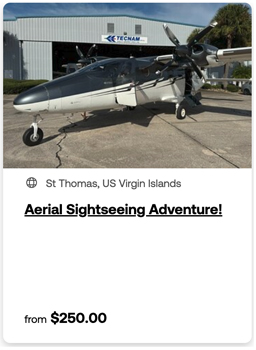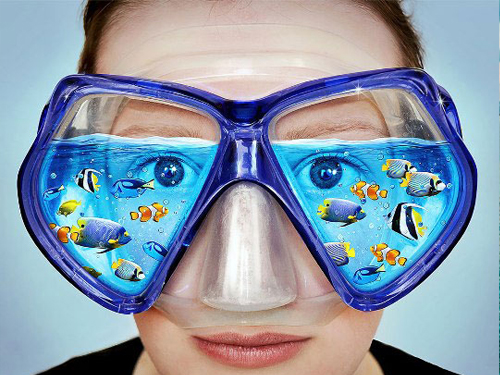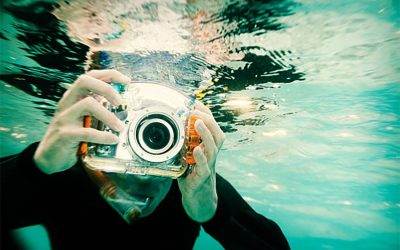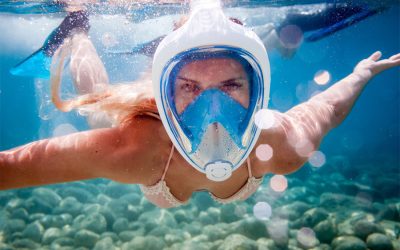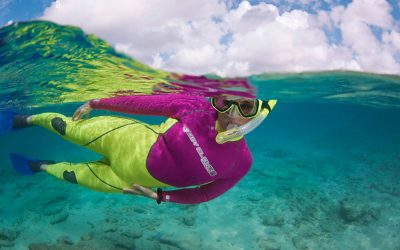Scuba Diving St. Thomas - Dive Deep Into A World Of Wonders
St. Thomas, a jewel nestled in the heart of the US Virgin Islands, beckons travelers with its turquoise waters, lush rainforests, and rich cultural heritage. But beneath the surface lies a whole other world, teeming with vibrant life and breathtaking underwater landscapes. Scuba diving St. Thomas is not just an activity; it’s an invitation to explore a hidden kingdom, a vibrant tapestry woven from coral reefs, playful fish, and fascinating shipwrecks.
Imagine gliding through crystal-clear waters, surrounded by schools of colorful fish flitting among coral forests. Picture encountering majestic sea turtles grazing peacefully, or graceful stingrays gliding effortlessly by. This is the reality that awaits you on a scuba diving adventure in St. Thomas.
Whether you’re drawn to the dramatic walls of Cow & Calf, the teeming life at Coral Gardens, or the historical allure of the RMS Rhone shipwreck, scuba diving in St. Thomas promises an unforgettable experience. Get ready to unlock the secrets of the deep, discover a new perspective on this tropical paradise, and create memories that will last a lifetime.
This site uses affiliate links which may earn a commission at no additional cost to you
Here's What You'll Learn About Scuba Diving St. Thomas
Whether you’re a beginner or an experienced diver, this guide equips you with all the knowledge you need to plan your St. Thomas diving adventure and make the most of your time beneath the waves.
Scuba Diving St. Thomas: What Are The Best Dive Sites?
St. Thomas boasts a diverse underwater landscape, from vibrant coral reefs and swim-throughs to historical shipwrecks and teeming marine life. Whether you’re a seasoned diver or just starting out, there’s a perfect dive site waiting for you!
Here are the top 10 must-se dive sites around St. Thomas, USVI
1. Cow And Calf - An Iconic Duo
1. Cow And Calf Overview
Cow & Calf Rocks: An iconic duo, these shallow reefs (max depth 45ft) are perfect for beginners and families. Explore swim-throughs, arches, and vibrant elkhorn corals teeming with angelfish, lobsters, and even nurse sharks.
This site features an impressive underwater topography with large coral formations and swim-throughs. It’s known for its abundance of marine life including reef fish, turtles, and occasional sightings of nurse sharks. It’s suitable for divers of all levels.
2. Cow And Calf Marine Life And Underwater Features
- Abundant fish: You can expect to see a wide variety of fish at Cow and Calf, including angelfish, butterflyfish, parrotfish, surgeonfish, grunts, snappers, and more.
- Sharks: Nurse sharks are often seen resting on the bottom in the deeper areas of the site. Keep an eye out for their distinctive markings.
- Turtles: Green sea turtles are also common visitors to Cow and Calf. They are graceful swimmers and a pleasure to watch.
- Lobsters and crabs: These crustaceans can be found hiding in the nooks and crannies of the rocks.
- Other invertebrates: You may also see octopus, squid, seahorses, and other interesting creatures.
Underwater features:
- Caves and swim-throughs: Cow and Calf is known for its labyrinth of caves and swim-throughs. These provide shelter for marine life and add to the excitement of the dive.
- Ledges and canyons: The rocks at Cow and Calf are home to a variety of ledges and canyons, which are teeming with life.
- Coral reefs: The surrounding coral reefs are healthy and colorful, providing food and habitat for many marine creatures.
Here are some additional tips for diving at Cow and Calf:
- The dive site is suitable for divers of all levels, but be aware that some of the swim-throughs can be tight.
- The currents can be strong at times, so be sure to go with a guide or dive operator who is familiar with the site.
- Be careful not to touch or damage the coral reefs.
- Bring a dive light to explore the caves and swim-throughs.
2. Coki Beach - A Caribbean Paradise for All Divers
1. Coki Beach Overview
Coki Beach boasts two shallow reefs at depths of 40 and 50 feet, making it a fantastic option for both beginner and experienced divers.
Here’s a breakdown of what you can expect:
There are several dive sites around Coki Beach, each offering unique underwater landscapes and attractions.
Some popular dive sites include:
- Coral Gardens: This site features beautiful coral formations and a diverse array of marine life.
- Coki Point: Known for its large coral heads and underwater tunnels, Coki Point is a favorite among divers looking for adventurous underwater terrain.
- The Playground: This site is characterized by a sandy bottom dotted with coral formations, making it an excellent spot for underwater navigation and exploration.
2. Coki Beach Marine Life And Underwater Features
Marine Life:
- Tropical Fish: Expect a kaleidoscope of colors with angelfish, butterflyfish, parrotfish, surgeonfish, grunts, snappers, and more.
- Highlight: Look for the vibrant queen angelfish and the distinctively patterned blue tang.
- Larger Inhabitants: Keep an eye out for graceful green sea turtles and even nurse sharks resting on the deeper sections.
- Hidden Creatures: Explore nooks and crannies to find lobsters, crabs, eels, octopus, and maybe even a shy seahorse.
- Bonus: Night dives offer a different experience with nocturnal species like shrimp, squid, and bioluminescent plankton.
Underwater Features:
- Calm Conditions: With its sheltered location, Coki Beach offers generally calm and clear waters for a relaxing dive.
- Healthy Reefs: Both reefs are vibrant and teeming with life, showcasing diverse coral formations like brain corals, elkhorn corals, and sea fans.
- Varied Topography: Enjoy gentle slopes, sandy areas, and occasional rock formations, adding diversity to your underwater exploration.
- Coral Nursery: Coki Beach participates in coral restoration efforts, so you might encounter protected coral nursery areas.
Additional Tips:
- Consider a guided tour for enhanced knowledge and navigation.
- Be mindful of your buoyancy to avoid damaging the delicate coral formations.
- Utilize dive lights to explore hidden areas and appreciate the vibrant colors.
- Respect marine life by observing from a distance and avoiding touching or disturbing them.
3. Christmas Cove
1. Christmas Cove Overview
Christmas Cove is a renowned dive site situated on the southern coast of St. Thomas in the U.S. Virgin Islands. Christmas Cove is a fantastic dive destination offering breathtaking underwater scenery, diverse marine life, and convenient access from St. Thomas.
Whether you’re a beginner or experienced diver, exploring the reefs of Christmas Cove is sure to be a memorable experience.
Here’s some information about this captivating dive spot:
Dive Sites: There are several dive sites within Christmas Cove, each offering unique underwater landscapes and attractions. Some popular dive sites include:
- Shipwrecks: There are several shipwrecks in Christmas Cove, including the remains of small boats and sailboats. These wrecks provide habitat for marine life and are interesting sites to explore.
- Coral Gardens: This area features beautiful coral formations, including hard and soft corals, sea fans, and sponges. Divers can swim among the coral gardens and observe the diverse marine ecosystem.
- Underwater Pinnacles: There are underwater pinnacles and rock formations in Christmas Cove, which attract a variety of marine species. Divers can explore these underwater formations while enjoying encounters with colorful fish and other marine life.
2. Christmas Cove Marine Life And Underwater Features
Marine Life:
- Colorful Reef Fish: Expect a vibrant display of angelfish, butterflyfish, parrotfish, surgeonfish, grunts, and snappers, adding life and color to the reef.
- Highlights: Look for the distinctive markings of the queen triggerfish and observe the blue tang cleaning stations.
- Gentle Giants: You might encounter graceful green sea turtles grazing on seagrass meadows or observe southern stingrays gliding effortlessly across the sandy bottom.
- Hidden Creatures: Peek into the nooks and crannies of the reef to find shy moray eels, spiny lobsters, and playful octopus camouflaged against the rocks.
Underwater Features:
- Gentle Slopes and Reefs: The dive site features gentle slopes covered in vibrant coral formations, perfect for leisurely exploration. The shallow depths (around 30-40 feet) make it ideal for beginners.
- Swim-Throughs and Caves: Add a touch of adventure with swim-throughs leading to small caverns, offering glimpses into the hidden life within the reef.
- Healthy Coral Gardens: Christmas Cove boasts healthy coral formations like brain corals, elkhorn corals, and sea fans, teeming with an abundance of colorful fish.
- Sandy Areas: Relax and observe marine life in the sandy areas between the reefs, where you might spot stingrays and interesting creatures burrowing in the sand.
Additional Tips:
- Consider joining a guided tour for added knowledge and assistance, especially if you’re a beginner.
- Maintain good buoyancy control to avoid damaging the delicate coral formations.
- Utilize dive lights to explore the swim-throughs and appreciate the full spectrum of colors.
4. Carvel Rock
1. Carvel Rock Overview
Carvel Rock is a captivating dive site located off the southern coast of St. Thomas in the U.S. Virgin Islands. This underwater pinnacle rises from the depths to within just a few feet of the surface, creating an exhilarating dive experience for adventurers of all levels.
Divers are immediately greeted by the sight of a stunning underwater landscape adorned with vibrant coral formations, swaying sea fans, and an abundance of marine life. The pinnacle is home to an array of colorful reef fish, including sergeant majors, butterflyfish, and angelfish, darting among the coral structures.
Carvel Rock’s clear, blue waters and moderate currents make it an ideal location for intermediate divers looking for an exciting underwater adventure. However, beginners can also enjoy this site with the guidance of experienced dive instructors.
Carvel Rock promises an unforgettable diving experience, where divers can immerse themselves in the beauty and biodiversity of the Caribbean Sea while exploring one of St. Thomas’s most iconic dive sites.
2. Carvel Rock Marine Life And Underwater Features
Carvel Rock, a majestic islet just east of Congo Cay, provides a thrilling experience for both experienced and adventurous divers in St. Thomas. Its dramatic rock formations, diverse marine life, and challenging currents create an unforgettable underwater adventure.
Marine Life:
- Abundant Reef Fish: Expect a dazzling display of colors with angelfish, butterflyfish, parrotfish, surgeonfish, grunts, and snappers flitting around the vibrant coral reefs.
- Thrilling Encounters: Keep an eye out for larger marine life like reef sharks, barracuda, and even spotted eagle rays cruising along the currents.
- Hidden Treasures: Explore the nooks and crannies to discover spiny lobsters, moray eels, and octopus camouflaged against the rocks.
Underwater Features:
- Dramatic Rock Formations: The main attraction is the towering rock itself, featuring sheer cliffs, swim-throughs, and canyons teeming with life.
- Varied Depths: Explore depths ranging from 15 to 80 feet, offering excitement for both novice and experienced divers.
- Healthy Coral Gardens: Vibrant coral formations like brain corals, elkhorn corals, and sea fans provide food and shelter for diverse marine life.
- Strong Currents: Be aware of the strong currents around the rock, making proper planning and experienced guidance crucial.
- The Cut: This submerged passage through the rock offers a thrilling drift dive with abundant fish life.
Additional Tips:
- Only dive with an experienced guide or operator familiar with the site and currents.
- Maintain good buoyancy control to avoid damaging the delicate coral formations.
- Be prepared for potential strong currents and challenging conditions.
- Utilize dive lights to explore the swim-throughs and appreciate the full spectrum of colors.
5. Ledges Reef
1. Ledges Reef Overview
Ledges Reef is a captivating dive site nestled along the eastern end of St. Thomas in the U.S. Virgin Islands, offering an underwater adventure filled with diverse marine life and fascinating coral formations.
As divers descend into the crystal-clear waters, they are greeted by a dynamic seascape characterized by a series of underwater ledges, crevices, and caves. These geological features provide shelter and habitat for a multitude of marine species, creating an underwater oasis teeming with life.
The reef itself is adorned with colorful coral formations, including brain coral, staghorn coral, and delicate sea fans, adding a vibrant splash of color to the underwater landscape. Schools of tropical fish, such as parrotfish, sergeant majors, and blue tangs, dart among the corals, creating a mesmerizing spectacle for divers to behold.
With its moderate depths and relatively calm currents, Ledges Reef is suitable for both beginner and intermediate divers, offering a rewarding diving experience for enthusiasts of all skill levels.
2. Ledges Reef Marine Life And Underwater Features
The Ledges of Little St. James dive site, nestled on the eastern side of the island, offers a diverse underwater experience for divers of all levels.
Its key features include:
Marine Life:
- Colorful Abundance: Expect a dazzling array of fish, including angelfish, butterflyfish, parrotfish, surgeonfish, grunts, and snappers, painting the reefs with vibrant hues.
- Larger Encounters: Keep an eye out for reef sharks, turtles, stingrays, and even octopus hiding amongst the ledges and overhangs.
- Hidden Wonders: Explore nooks and crannies to discover moray eels, lobsters, and other fascinating creatures camouflaged amongst the coral.
Underwater Features:
- Ledges and Overhangs: The namesake feature offers exciting exploration opportunities. These formations teem with life and create unique microhabitats.
- Varied Depths: Choose your adventure! The site ranges from 20 to 40 feet, catering to both beginner and experienced divers.
- Healthy Coral Reefs: Vibrant coral formations like brain corals, elkhorn corals, and sea fans create a flourishing ecosystem.
- Gentle Slopes: Enjoy leisurely exploration over gently sloping reefs teeming with colorful fish.
Additional Tips:
- Consider joining a guided tour: This can be helpful for navigating the site and learning about the local marine life.
- Maintain good buoyancy control: This is crucial to avoid damaging the delicate coral formations.
- Utilize dive lights: Enhance your experience by exploring hidden areas and appreciating the full spectrum of colors.
- Respect marine life: Observe from a distance and avoid touching or disturbing them.
Please note:
- Diving conditions and marine life sightings can vary depending on the season, weather, and time of day.
- Check local regulations and dive shop recommendations before your visit.
6. WIT Concrete
1. WIT Concrete Overview
2. WIT Concrete Marine Life And Underwater Features
The WIT Concrete dive site is a popular wreck dive off the west end of St. Thomas, USVI. This 350-foot former bulk carrier offers an exciting underwater experience for divers of all levels.
Here’s a breakdown of what you can expect:
Marine Life:
- Abundant Fish: Schools of angelfish, butterflyfish, parrotfish, surgeonfish, grunts, and snappers dart around the wreck, creating a vibrant spectacle.
- Larger Encounters: Look out for impressive marine life like barracuda, turtles, stingrays, and even sharks (nurse sharks and reef sharks) seeking shelter in the wreck’s nooks and crannies.
- Hidden Treasures: Explore the wreck’s compartments and swim-throughs to discover moray eels, octopus, lobsters, and other fascinating creatures.
Underwater Features:
- Imposing Wreck: The WIT Concrete sits upright on the sandy bottom at depths ranging from 70 to 100 feet, offering various penetration points for exploration.
- Compartments and Swim-throughs: Dive through corridors, engine rooms, and cargo holds, teeming with marine life and adding a sense of adventure.
- Varied Depths: Explore different sections of the wreck at different depths, catering to divers of various experience levels.
- Artificial Reef: Overgrown with colorful coral and sponges, the wreck has transformed into a thriving artificial reef.
Additional Tips:
- Consider a guided tour: This is highly recommended for navigating the wreck safely and learning about its history.
- Proper buoyancy control is crucial: Avoid damaging the wreck and its inhabitants.
- Use dive lights: Penetrate into darker areas and appreciate the full spectrum of colors.
- Respect the wreck and its inhabitants: Observe from a distance and avoid touching or disturbing anything.
Please note:
- Diving conditions and marine life sightings can vary depending on the season, weather, and time of day.
- Check local regulations and dive shop recommendations before your visit.
- The wreck can be challenging to navigate and might have strong currents, so ensure you have the necessary skills and experience
7. Hans Lollik Island
1.Hans Lollik Island Overview
Hans Lollik Island, located off the northeastern coast of St. Thomas in the U.S. Virgin Islands, offers an enchanting dive site renowned for its stunning underwater scenery, diverse marine life, and fascinating geological formations.
As divers descend into the crystal-clear waters surrounding Hans Lollik Island, they are greeted by a breathtaking underwater landscape characterized by towering coral formations, swim-throughs, and dramatic drop-offs. The dive site features a range of depths, catering to both beginner and experienced divers, with shallow areas perfect for introductory dives and deeper sections for more advanced exploration.
One of the main attractions of diving at Hans Lollik Island is the incredible diversity of marine life that inhabits its coral reefs. Schools of colorful reef fish, including parrotfish, angelfish, and butterflyfish, dart among the coral formations, creating a mesmerizing spectacle for divers to behold. Lucky divers may also encounter larger marine creatures such as moray eels, nurse sharks, and eagle rays gliding gracefully through the water.
The coral reefs surrounding Hans Lollik Island are exceptionally vibrant and healthy, boasting an array of soft corals, hard corals, and delicate sea fans that add to the beauty of the underwater landscape. These coral formations provide shelter and sustenance for a wide variety of marine species, making each dive at Hans Lollik Island a unique and unforgettable experience.
In addition to its stunning coral reefs, Hans Lollik Island also features intriguing underwater rock formations, swim-throughs, and caverns waiting to be explored. These geological features offer an element of adventure to the dive site, inviting divers to discover hidden treasures and encounter unique underwater environments.
2. Hans Lollik Island Marine Life And Underwater Features
While Hans Lollik Island itself isn’t accessible for diving, the surrounding waters offer a captivating underwater experience known as the “Hans Lollik Area” or “North Shore Dives.” Dive into diverse marine life, stunning underwater features, and helpful tips to plan your adventure:
Marine Life:
- A kaleidoscope of color: Expect vibrant angelfish, butterflyfish, parrotfish, surgeonfish, and more flitting across your vision.
- Larger encounters: Keep an eye out for graceful turtles, majestic rays, and even sharks (nurse sharks, reef sharks, and sometimes, tiger sharks for experienced divers).
- Hidden wonders: Explore nooks and crannies to discover shy moray eels, spiny lobsters, and camouflaged octopus.
Underwater Features:
- Dramatic walls and pinnacles: Experienced divers can enjoy thrilling drift dives along vertical walls and towering pinnacles teeming with life.
- Gentle slopes and reefs: Beginners and seasoned divers alike can explore colorful coral formations and diverse fish life on these sloping reefs.
- Intriguing swim-throughs and caves: Add an adventurous touch by navigating through these hidden passages, bursting with marine life.
- Sandy havens: Relax and observe creatures like stingrays and burrowing animals in calmer, sandy areas.
Additional Tips:
- Choose wisely: Select a dive operator with expertise in the specific site you plan to explore. They’ll provide necessary guidance and ensure a safe dive.
- Be weather-aware: Diving conditions and marine life sightings can vary depending on the season, weather, and time of day. Check local forecasts and dive shop recommendations.
- Buoyancy matters: Maintain good buoyancy control to avoid damaging the delicate coral ecosystems.
- Light up the adventure: Utilize dive lights to explore hidden areas and appreciate the full spectrum of colors underwater.
- Respect the residents: Observe marine life from a distance and avoid touching or disturbing them. Remember, you’re a guest in their world.
Advanced And Specialty Dives Around St. Thomas
1. Congo Cay
Congo Cay, located off the coast of St. Thomas in the US Virgin Islands, is renowned among advanced divers for its exhilarating and challenging dive experiences. This site features a dramatic underwater landscape characterized by steep drop-offs, intricate coral formations, and abundant marine life. Advanced divers are drawn to Congo Cay for its deep-water diving opportunities, with depths ranging from 60 to 100 feet or more, offering the chance to explore the depths of the Caribbean Sea.
One of the highlights of diving at Congo Cay is the opportunity to encounter large pelagic species such as sharks, barracudas, and eagle rays, which frequent the area’s deeper waters. The currents around Congo Cay can be strong and unpredictable, adding an additional element of challenge and excitement to the dive. Divers should be proficient in drift diving techniques and have experience managing buoyancy in varying conditions to safely navigate this site.
Exploring the underwater terrain of Congo Cay reveals a vibrant ecosystem teeming with marine biodiversity. Divers can expect to encounter colorful reef fish darting among the coral formations, as well as fascinating macro life such as nudibranchs, sea fans, and moray eels hiding in the nooks and crannies of the reef.
Due to its remote location and challenging conditions, diving at Congo Cay is typically reserved for experienced divers who are comfortable with deep dives and navigating strong currents. Dive operators in St. Thomas may offer guided excursions to Congo Cay for certified advanced divers looking to explore this thrilling underwater playground.
2. WIT Shoal II
The WIT Shoal II is a popular wreck dive site located off the south coast of St. Thomas, US Virgin Islands. The 327-foot freighter sank in 1984 while being towed to Puerto Rico for scrap. Today, it sits upright in 90 feet of water, making it a great dive for intermediate to advanced divers.
The wreck is home to a variety of marine life, including fish, coral, turtles, and sharks. The most popular areas to explore are the engine room, the cargo holds, and the bridge. Divers can also swim through the smokestacks, which are encrusted with colorful coral.
The WIT Shoal II is home to a wide variety of marine life, including fish, turtles, sharks, and rays. The wreck is also covered in coral and sponges, making it a beautiful place to dive.
Here are some of the things you can see on a dive of the WIT Shoal II:
- The pilothouse, which is now home to a large school of fish
- The engine room, which is still intact
- The cargo holds, which are now home to coral and sponges
- The smokestacks, which are a great place to see fish
- The many swim-throughs, which offer a variety of views
If you are an experienced diver looking for a challenging and rewarding dive, the WIT Shoal II is a great option. Just be sure to be aware of the conditions and to dive with a buddy.
3. The Pinnacles
The Pinnacle, also known as the Deep Pinnacle, is a majestic underwater mountain rising from the depths off the coast of St. Thomas, US Virgin Islands. It’s a true diving gem, especially for experienced divers seeking a challenging and rewarding experience teeming with diverse marine life and dramatic underwater landscapes.
Key characteristics:
- Depth: 80-120 feet (24-37 meters) with the north side dropping even deeper
- Skill Level: Advanced/Experienced divers due to depth and currents
- Location: Six miles offshore St. Thomas
- Highlights: Sea fans, cleaner station on top, spotted eagle rays, large schools of fish, black durgons, steep walls, diverse corals
What awaits you:
- Dramatic underwater topography: The pinnacle itself is a breathtaking sight, rising from the sandy bottom like a submerged island. The north side boasts a steep wall, while the south side features gentler slopes adorned with colorful coral formations.
- Thriving marine life: The Pinnacle is a magnet for a wide variety of marine creatures. Keep your eyes peeled for spotted eagle rays gracefully gliding through the water, schools of colorful fish dancing around the coral, and even elusive black durgons lurking in the shadows.
- Cleaner station: On the top of the pinnacle, you’ll find a unique “cleaner station” where larger fish like groupers and snappers gather to be rid of parasites by smaller fish called cleaner wrasse.
Important considerations:
- Depth and currents: The Pinnacle is a deep dive with strong currents, so it’s not suitable for beginners or divers with limited experience. Make sure you have the necessary skills and certifications before attempting this dive.
- Visibility: Visibility can vary depending on the time of year and weather conditions. Ask your dive operator about the current conditions before booking your dive.
- Safety: Always dive with a buddy and follow safe diving practices. Be aware of your depth, air consumption, and surroundings.
If you’re an experienced diver looking for an unforgettable adventure, The Pinnacle is a must-dive on your St. Thomas diving itinerary. Just remember to be prepared for the challenges and reap the rewards of exploring this underwater wonderland.
Stunning Underwater Photography In St. Thomas - A Guide For Beginners And Enthusiasts
1. Unveiling the Enchanting Depths of St. Thomas:
St. Thomas, a gem in the U.S. Virgin Islands, boasts a vibrant underwater world teeming with diverse marine life, coral reefs bursting with color, and historical shipwrecks waiting to be explored. For photography enthusiasts, it’s a paradise waiting to be captured.
What makes St. Thomas unique?
- Variety of dive sites: From shallow reefs teeming with colorful fish to dramatic walls and historical wrecks, St. Thomas offers something for every photographer.
- Calm and clear waters: Excellent visibility ensures stunning shots, making it ideal for beginners and experienced photographers alike.
- Abundant marine life: Encounter vibrant coral reefs, playful dolphins, majestic sea turtles, and a myriad of tropical fish.
- Accessible dive sites: Many dive sites are easily reachable by boat, making it convenient for exploration.
2. Capturing the Magic: Best Practices for Underwater Photography:
- Master buoyancy: Perfect buoyancy control ensures sharp, stable images and protects the delicate marine environment.
- Adjust your settings: Underwater, light gets absorbed differently. Experiment with manual settings to adjust aperture, shutter speed, and ISO for optimal results.
- Think composition: Apply the basics of photography underwater. Use leading lines, rule of thirds, and negative space to create visually appealing shots.
- Get closer: Don’t be afraid to get close to your subjects for impactful images. Remember to maintain respectful distances to avoid disturbing marine life.
- Mind the background: Pay attention to the background and avoid including distracting elements like air bubbles or murky water.
- Use natural light: Utilize sunlight filtering through the water for natural illumination and avoid harsh artificial light sources.
3. Gearing Up for Success: Recommended Equipment and Settings:
Essential Equipment:
- Underwater camera housing: Protects your camera from water damage and allows for depth control.
- Wide-angle lens: Captures the vastness of underwater landscapes and groups of marine life.
- Macro lens: Zooms in for detailed shots of smaller creatures and coral formations.
- Strobe or flash: Adds light and color in low-light conditions.
Recommended Settings:
- Aperture: Start with a slightly smaller aperture (f/8-f/16) for increased depth of field.
- Shutter speed: Adjust based on the desired effect. Use faster shutter speeds for action shots and slower speeds for capturing movement.
- ISO: Keep it low (ISO 100-200) to minimize noise and maintain image quality.
Additional Tips:
- Consider taking an underwater photography course: Learn valuable techniques and gain confidence in your skills.
- Join a guided photo tour: Local guides know the best spots and can help you capture stunning images.
- Practice on land: Familiarize yourself with your camera and settings before diving in.
Scuba Diving St. Thomas - Planning Your Trip
1. Choosing The Best Time To Scuba Dive St. Thomas
Ideal dive season:
- June to November: This is the general consensus for the best time to scuba dive in St. Thomas, as the weather is typically calm and sunny, with water temperatures ranging from 82°F to 86°F (28°C to 30°C). Visibility is also at its best during this time, with an average of 100 feet or more.
- December to May: The winter months can be a bit more unpredictable, with occasional cold fronts bringing rain and rough seas. However, water temperatures are still comfortable, averaging around 78°F (26°C), and there are fewer crowds. This can be a good time to see humpback whales, which migrate through the area from January to March.
Weather considerations:
-
Hurricanes: The hurricane season in the Caribbean runs from June to November, but St. Thomas is located outside the main hurricane belt and is rarely hit directly by storms. However, it is always a good idea to check the forecast before you travel.
-
Rain showers: Rain showers are possible year-round in St. Thomas, but they are typically brief and do not affect diving conditions significantly.
Events and festivals:
- St. Thomas Underwater Film Festival: Held annually in June, this festival showcases the best underwater films from around the world.
- Cruzan Underwater Music Festival: Held annually in May on St. Croix, this festival features live music performances underwater.
-
Humpback whale migration: January to March is the best time to see humpback whales in St. Thomas.
Additional factors to consider:
- Your experience level: If you are a beginner diver, you may want to choose a time of year when the conditions are calmer and the visibility is better.
- Your interests: If you are interested in seeing specific marine life, you will want to research the best time of year to see them. For example, the best time to see turtles is from February to August.
- Your budget: Prices for flights and accommodations tend to be higher during the peak season (June to November).
2. Check Out These Exciting Scuba Excursions On St. Thomas, USVI
Essential Scuba Gear For Diving St. Thomas, USVI
Having the right scuba gear is paramount for diving in St. Thomas, ensuring both safety and enjoyment beneath its crystal-clear waters. Each piece of equipment plays a vital role in facilitating a successful dive expedition.
A well-fitted mask provides clear vision, essential for spotting vibrant marine life and intricate coral formations. Fins enable efficient propulsion, allowing divers to glide effortlessly through the water and explore the diverse underwater landscapes that St. Thomas offers.
Proper buoyancy control with a reliable BCD ensures stability and comfort at various depths, while a well-maintained regulator system guarantees a steady supply of air throughout the dive.
Additionally, advanced instruments like dive computers provide crucial data for safe underwater navigation and monitoring of dive parameters. With the right gear, divers can fully immerse themselves in the awe-inspiring beauty of St. Thomas’ underwater world, while staying safe and comfortable throughout their adventure.
Here’s a list of essential scuba gear you’ll need:
1. Mask, fins, and snorkel: A good mask, fins, and snorkel are essential for any scuba diver. The mask should fit snugly on your face and provide a clear view of the underwater world. The fins should be powerful enough to propel you through the water, but not so powerful that they tire you out quickly. The snorkel should be comfortable to use and allow you to breathe easily while swimming on the surface.
2. Buoyancy compensator (BC): The BC is a vest that helps you control your buoyancy underwater. It is inflated with air from your scuba tank and can be deflated to make you sink or inflated to make you rise. The BC also has pockets for storing weights, a whistle, and other scuba gear.
3. Regulator: The regulator is the piece of equipment that reduces the high pressure air from your scuba tank to a pressure that you can breathe. It also has a mouthpiece that you use to breathe underwater.
4. Scuba tank: The scuba tank is a cylinder that holds the compressed air that you breathe underwater. Scuba tanks come in different sizes, so you can choose one that holds enough air for the length of your dive.
5. Wetsuit or drysuit: A wetsuit or drysuit helps to protect you from the cold water. Wetsuits are made of neoprene, which is a material that insulates you from the cold water. Drysuits are made of a waterproof material that keeps you completely dry underwater.
6. Weights: Weights are used to help you sink underwater. The amount of weight you need will depend on your body composition, the thickness of your wetsuit or drysuit, and the amount of air in your BC.
7. Dive computer: A dive computer is a small electronic device that helps you monitor your dive. It can track your depth, time, and decompression stops.
In addition to the essential gear listed above, there are a few other items that you may want to consider bringing on your dive trip to St. Thomas:
- Dive booties: Dive booties protect your feet from cuts and scrapes.
- Dive gloves: Dive gloves protect your hands from cuts and scrapes and can also help you to grip your scuba gear more easily.
- Hood: A hood can help to keep your head warm in the cooler water.
- Dive knife: A dive knife can be used to cut fishing line, seaweed, or other debris that may get tangled in your gear.
- Sunscreen: Sunscreen is important to protect your skin from the sun’s harmful rays, even when you are underwater.
- Rashguard: A rashguard can help to protect your skin from the sun and from chafing.
- First-aid kit: A first-aid kit is essential for any dive trip.
Check Out These Essential Scuba Gear For Diving St. Thomas
St. Thomas Travel Regulations & Accomodations
Navigating travel regulations and accommodations in St. Thomas, USVI, requires a careful blend of preparation and flexibility. With its stunning beaches and vibrant culture, St. Thomas beckons travelers from around the globe, but understanding the ever-evolving travel requirements is essential.
From COVID-19 protocols to entry documents, travelers must stay informed to ensure a seamless journey.
Whether indulging in the opulence of waterfront villas or immersing oneself in the charm of local bed and breakfasts, St. Thomas promises an unforgettable experience for all who venture to its shores.
Travel Regulations & Documentation:
- US citizens:
- Valid passport required for entry.
- No visa required for stays under 6 months.
- Non-US citizens:
- Check visa requirements with your nearest US embassy or consulate.
- Valid passport required for entry.
Transportation & Accommodation:
- Flights:
- Cyril E. King Airport (STT) is the main airport serving St. Thomas.
- Consider connecting flights from major US cities like Miami or Atlanta.
- Airport transfers:
- Taxis, shuttles, and car rentals are readily available at the airport.
- Pre-arrange transportation for convenience, especially with dive gear.
- Accommodation:
- Numerous hotels, resorts, and vacation rentals cater to divers, often located near dive shops or beaches.
3. Check Out These Accomodations For Your St. Thomas Scuba Adventure
Scuba Diving St. Thomas - Safety Tips
1. Overview Of Potential Hazards
1. Currents: St. Thomas waters can experience strong currents, especially around certain dive sites. These currents can affect your ability to navigate and may pose a risk if not properly managed.
2. Marine life: While St. Thomas boasts beautiful marine biodiversity, some species may pose a risk to divers. Jellyfish, lionfish, and occasionally sharks inhabit these waters. Understanding how to interact with marine life safely is crucial.
3. Coral reefs: St. Thomas is known for its stunning coral reefs, but they can be delicate ecosystems. Accidental contact with coral can result in injury to both the diver and the reef.
2. Precautionary Measures For Safe Diving
1. Dive with a certified guide: Especially if you’re unfamiliar with the area, diving with a local guide who knows the waters and potential hazards can enhance safety.
2. Check weather and water conditions: Before diving, always check weather forecasts and current sea conditions. Avoid diving in rough weather or when conditions are unfavorable.
3. Dive within your limits: Stick to depths and dive sites that match your experience and certification level. Avoid pushing yourself beyond your training or comfort zone.
4. Buddy system: Always dive with a buddy and maintain visual contact throughout the dive. This ensures that you have someone to assist you in case of emergencies.
5. Respect marine life and environment: Keep a safe distance from marine creatures, avoid touching or harassing them, and be mindful of your movements to minimize damage to coral reefs.
3. Emergency Procedures And Contacts
1. Know the nearest decompression chamber: In the event of decompression sickness (DCS), knowing the location of the nearest decompression chamber and how to access it is crucial. In St. Thomas, the Virgin Islands Search and Rescue (VISAR) may assist with medical emergencies.
2. Emergency contacts: Save emergency contact numbers, including local emergency services and dive operators, in your phone and dive log. This ensures quick access to assistance if needed.
By following these safety tips and being prepared for potential hazards, you can enjoy a safe and memorable scuba diving experience in St. Thomas.
Diver Alert Network (DAN): The Lifeline Below - Exploring Its Services and Impact
Diving, whether for recreational or professional purposes, presents unique challenges and risks that demand specialized safety protocols and support systems. Among these, the Diver Alert Network (DAN) stands out as a cornerstone of diver safety worldwide.
Established with the mission of promoting safe diving through research, education, and emergency assistance, DAN has become an indispensable resource for divers and the diving industry.
Services Offered by DAN: Central to DAN’s mission is its provision of critical services aimed at safeguarding divers’ well-being before, during, and after their underwater excursions. These services include:
1. Medical Information Hotline: DAN operates a round-the-clock hotline staffed by medical professionals well-versed in dive medicine. Divers can seek advice on pre-dive health considerations, decompression illness, injury management, and other medical concerns.
2. Dive Safety Education: Recognizing the importance of informed decision-making in preventing accidents, DAN offers a wealth of educational resources. These range from online courses covering topics like dive safety, first aid, and emergency oxygen administration to in-person seminars and workshops conducted by seasoned dive safety experts.
3. Research and Advocacy: DAN is at the forefront of dive medicine research, conducting studies to enhance our understanding of diving physiology, injury mechanisms, and risk factors. Findings from these studies inform the development of evidence-based guidelines and best practices, which DAN actively promotes within the diving community and industry stakeholders.
4. Emergency Evacuation and Assistance: In the event of a diving-related emergency, DAN’s global network facilitates timely evacuation and medical treatment for affected individuals. Whether through direct intervention or coordination with local emergency services, DAN ensures that divers receive the care they need, wherever they may be.
Beyond The Dive - Exporing Beautiful St. Thomas
St. Thomas beckons with turquoise waters and vibrant reefs, but adventure extends far beyond the depths. Lace up your hiking boots and scale the verdant slopes of Bordeaux Ridge, rewarded with a hidden waterfall’s refreshing embrace.
Embrace your inner daredevil on the Caribbean’s longest zipline, Tree Limin’ Extreme, soaring through the rainforest canopy. Kayaking paints a new perspective, paddling into secluded coves teeming with colorful life.
Stand-up paddleboarding offers a serene glide across crystal-clear bays, while energetic souls can conquer Magen’s Bay on a paddleboard race. History whispers in the weathered stones of Fort Christian, and Blackbeard’s Castle ignites imaginations with tales of pirate plunder.
Indulge in a culinary adventure, savoring johnnycakes, callaloo soup, and conch fritters, a delicious fusion of African, Caribbean, and European influences.
From adrenaline-pumping thrills to cultural immersion and laid-back island charm, St. Thomas offers an unforgettable tapestry of experiences beyond the dive flag.
1. Check Out These Exciting Island Excursions On St. Thomas, USVI
Scuba Diving St. Thomas - FAQ
Here Are Some Additional Articles You May Want To Check Out
Embark on Adventure: Scuba Diving St. Thomas, USVI
Dive The World
Check Out Related Posts
Best Scuba Diving Camera For Beginners: The Top Picks For 2024
Selecting the best scuba diving camera for beginners is crucial as it can significantly enhance their underwater experience and immortalize unforgettable moments beneath the surface. These cameras enable divers to capture the awe-inspiring beauty of vibrant marine...
7 Best Full Face Snorkel Masks for Every Adventurer
Gazing at the wonders of the underwater world is an incredible experience, but traditional snorkel gear can sometimes get in the way. If you're looking to explore the reef with ease and maximum comfort, then a full face snorkel mask might be for you. These innovative...
Bonaire Snorkeling Adventures: A Snorkler’s Complete Guide
Bonaire beckons snorkelers to explore its enchanting underwater world, making it a premier destination for those seeking unparalleled experiences beneath the waves. With its fringing coral reefs, protected marine parks, and abundant marine life, Bonaire snorkeling...
